Best winter bib tights 2025: reviewed and rated for both men and women
Owning a set of the best bib tights is vital to keep you warm through the cold winter months. With the right pair, you're much more likely to head out the door
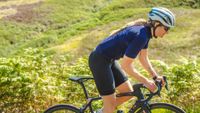
Matt Ischt-Barnard
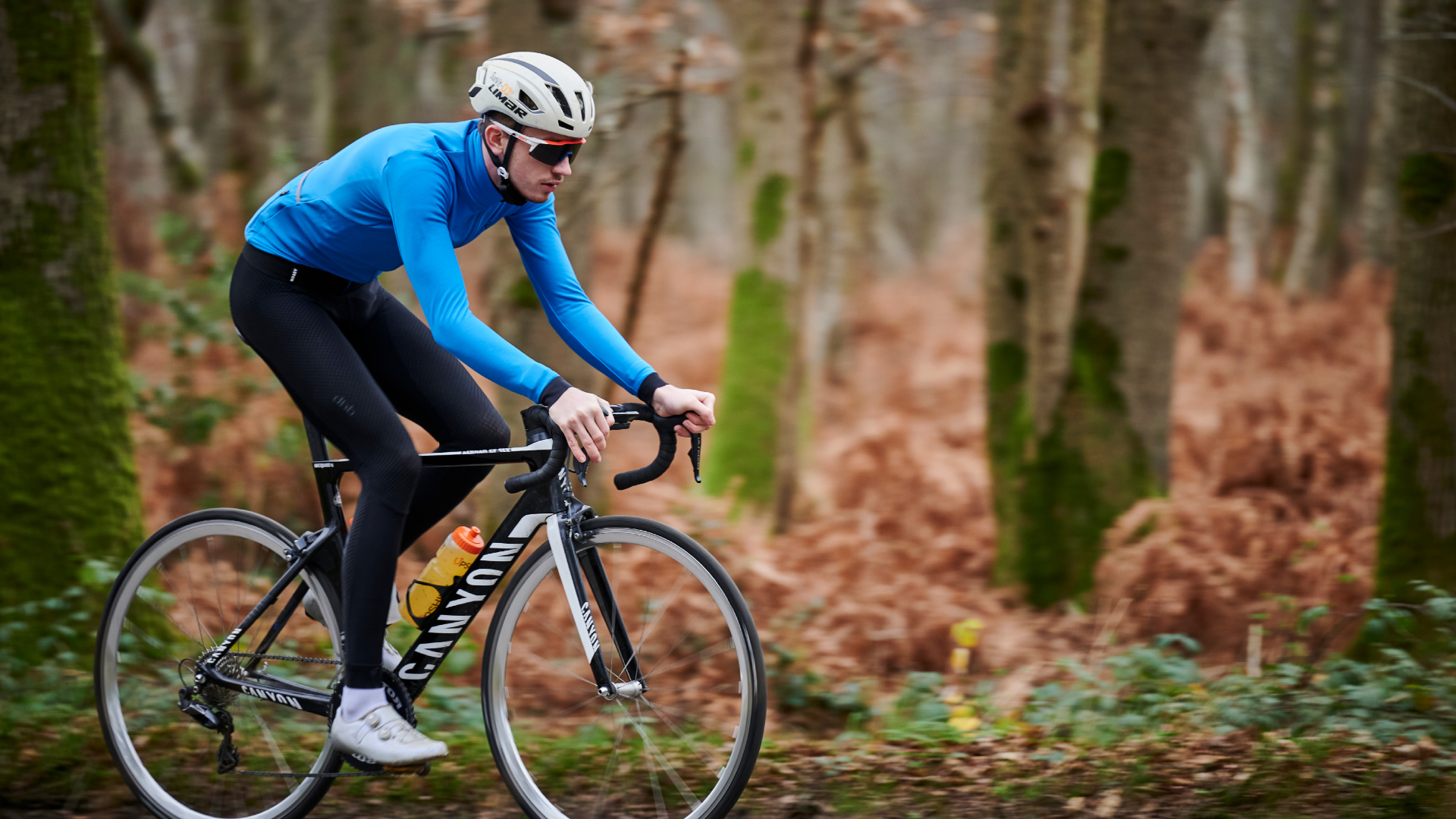
As temperatures drop and summer becomes fall, it's time to make the switch to the winter cycling wardrobe, which inevitably means donning some of the best winter bib tights. Choose the right pair and you will be able to keep pedalling even when the mercury hits zero.
But.. when is the right time to reach for the best bib tights? Generally speaking, once the best leg and knee warmers start to become less effective. Which, for most, will be as temperatures drop into single digits, if not a little bit before.
The best bib tights are far more complex than the best cycling shorts, in that they are more akin to the best winter cycling jackets, bringing together complex construction, multiple fabrics, and even waterproofing properties. Garments like our best overall, the Velocio Thermal Utility for men and the Castelli Sorpasso RoS for women, excel in this regard, allowing you to ride deep into winter, come rain or shine.
However, there are some new kids on the block. With a growing vocal group of riders shunning the leg warmer, which, to be honest, has never been the ideal solution, but for the lack of an alternative, we have tolerated them. We now have a new type of bib tight; they are thinner, lighter, and more like a long version of cycling shorts. They generally lack thermal backing and rely more heavily on tightly knit fabrics to create a protective barrier against the wind and cold. Great examples of these are the Castelli Espresso bibs, Q36.5 Gregarius Hybrid Lights and the Ornot Lightweight Droptail, which our North American Editor Rook branded a 'Game Changer'. Ultimately, they allow you to do away with leg and knee warmers; however, they come at a cost, which is the same as another pair of bib tights.
As with the best bib shorts, men’s and women’s bib tights are slightly different, and one of the few areas where purchasing the gender-specific garment can still make a significant difference. However, although we split, there is no reason that if you like the sound of any of the bibs in this guide, you can't purchase the correct one for you.
The quick list
Best Men's bib tights
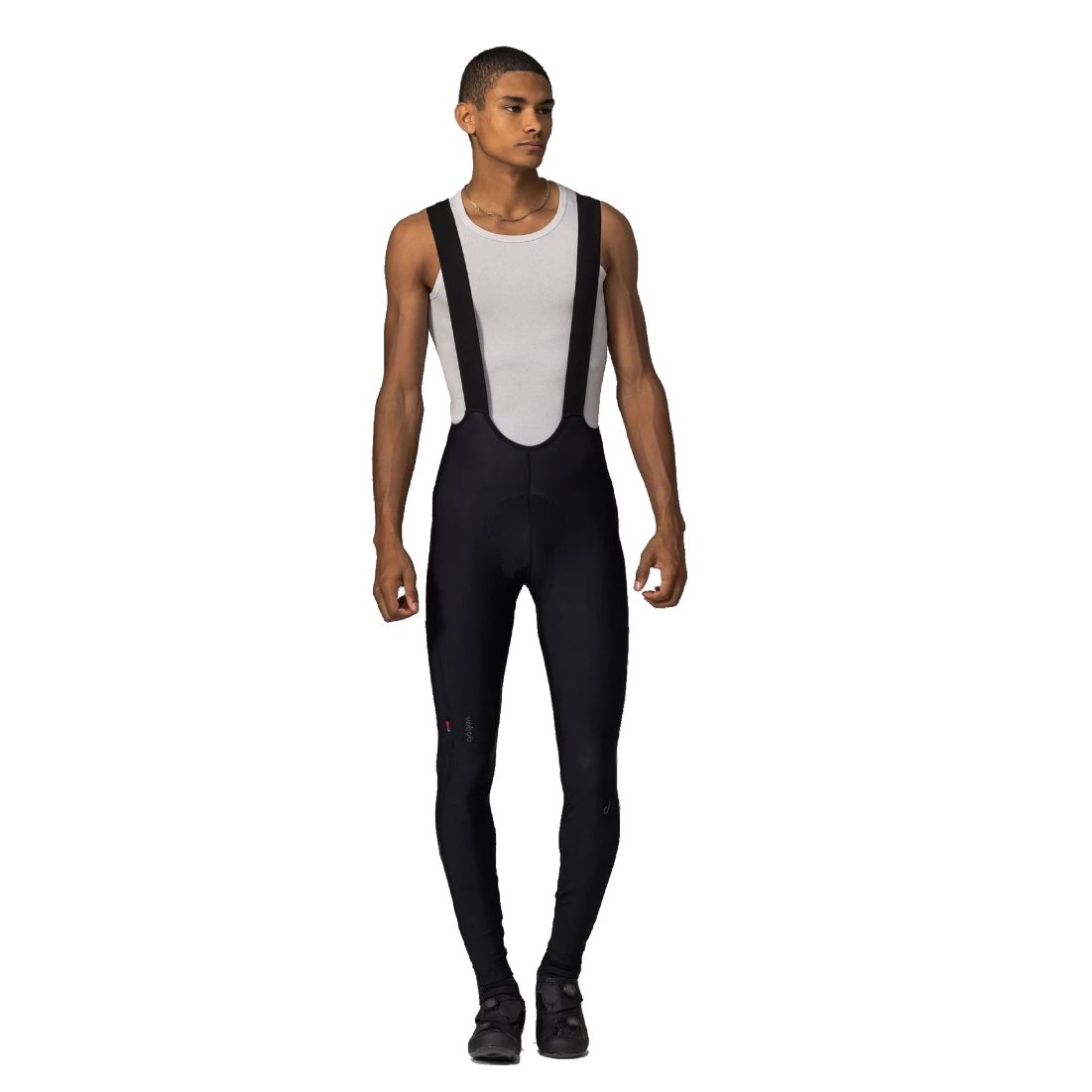
The power wool fabric is exceptionally warm and soft, but not bulky. Like the tights in general, the cargo pockets are well-designed and functional.

Perfect for days when you need to get out on your bike, whatever the weather. Warm, windproof and comfortable, they provide the ultimate protection.
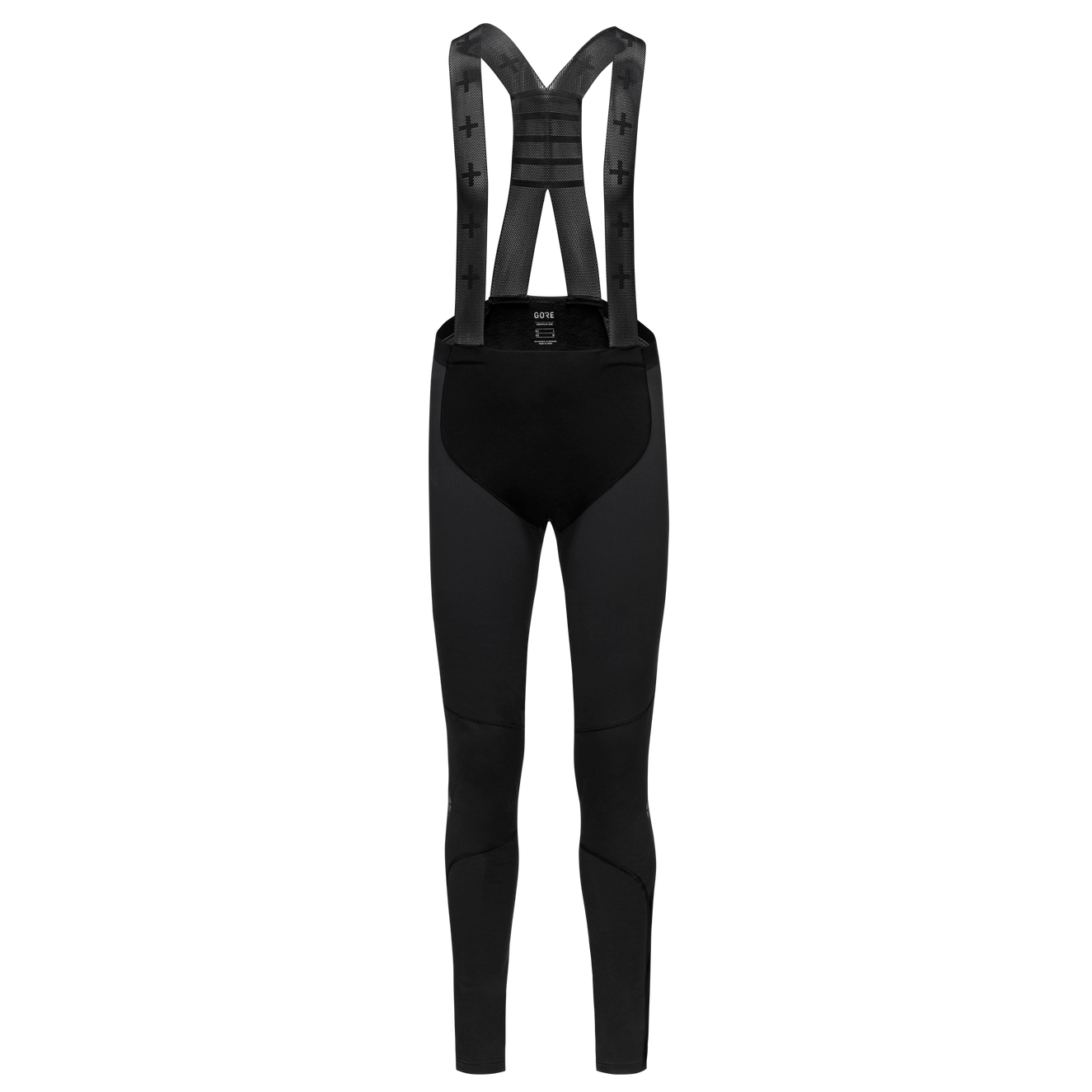
Cosy and with excellent articulation and fabric placement for optimised performance without the bulk. Gore has even made them relatively good value against their competition.
Load three more Men's bib tights
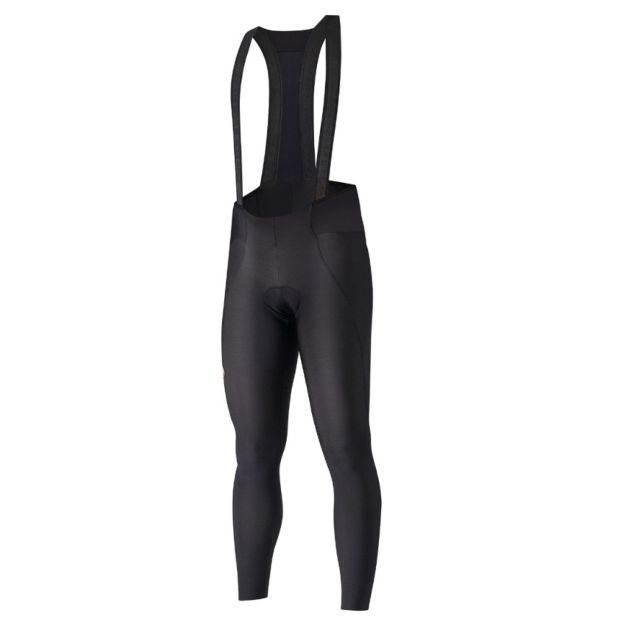
Lightweight, highly breathable and with excellent comfort, these are ideal for milder days.
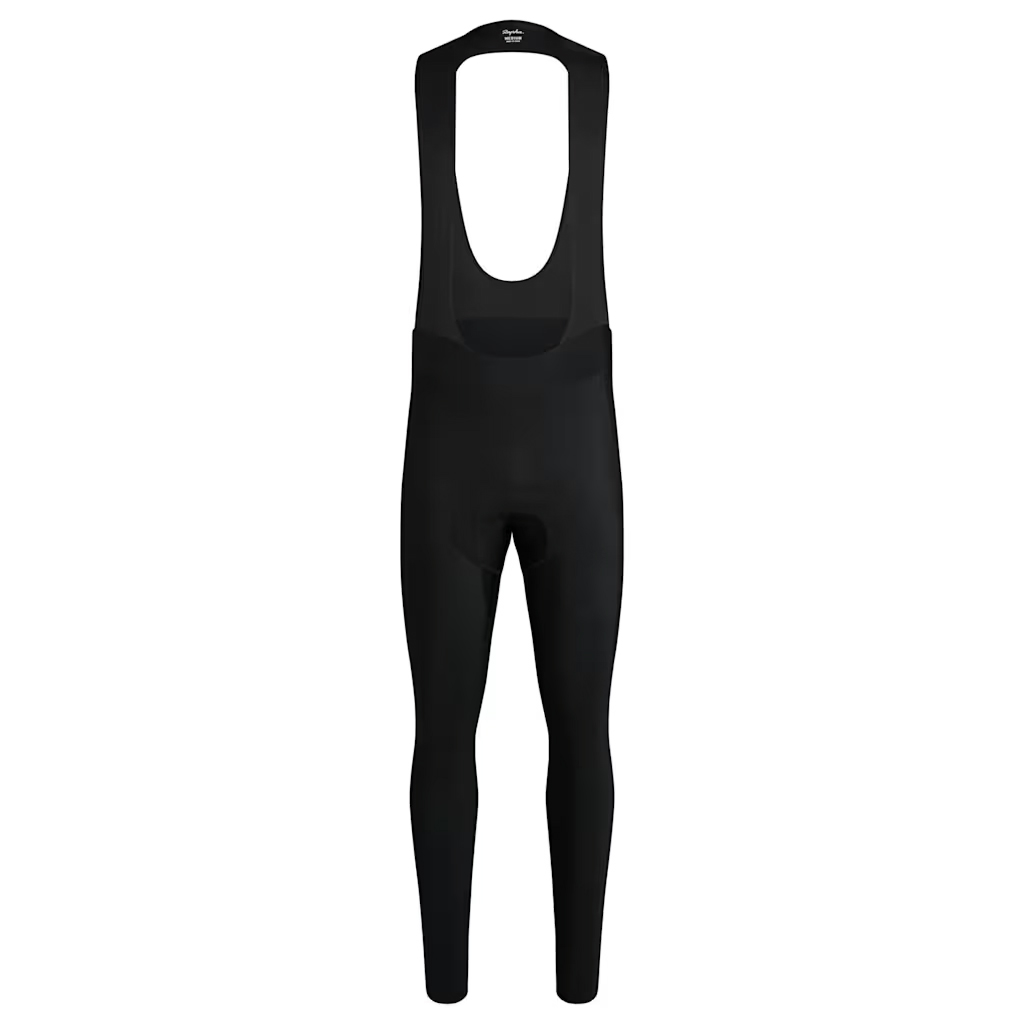
Rapha’s Core Cargo Winter Tights are one of the more affordable models in the test, and while they don't rival the more premium options, they are generally a solid performer.
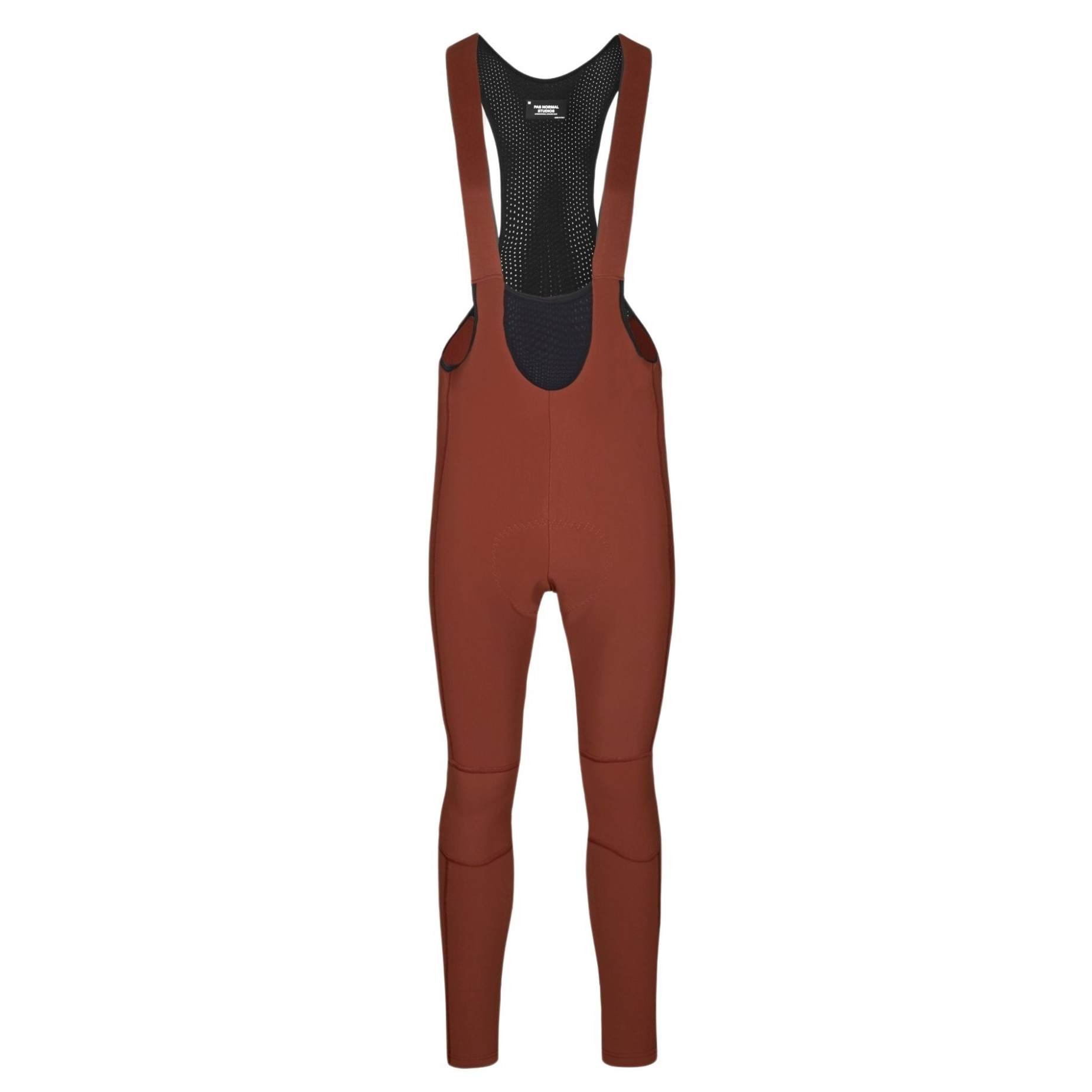
For fast-paced long winter rides in even the coldest conditions, these tights are brilliant. While the price is premium, I do not judge it excessively high for what they offer.
Best Women's bib tights
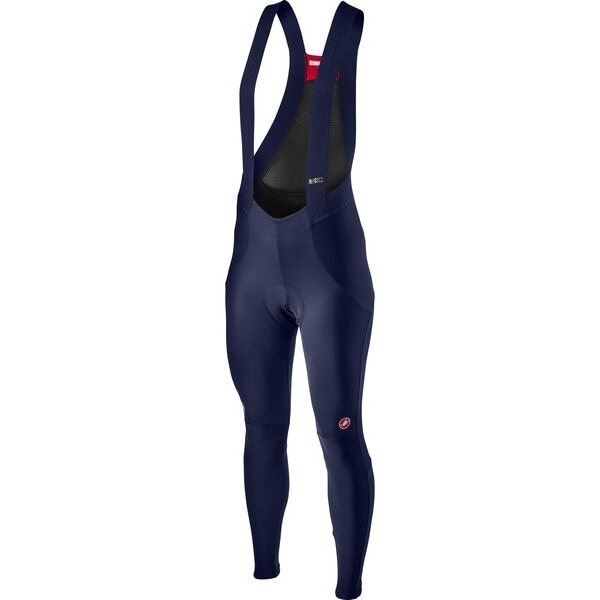
The Sorpasso bibs use a clever blend of materials to make them applicable to a range of winter riding. In essence, waterproof and breathable when temps rise but warm when they plummet.
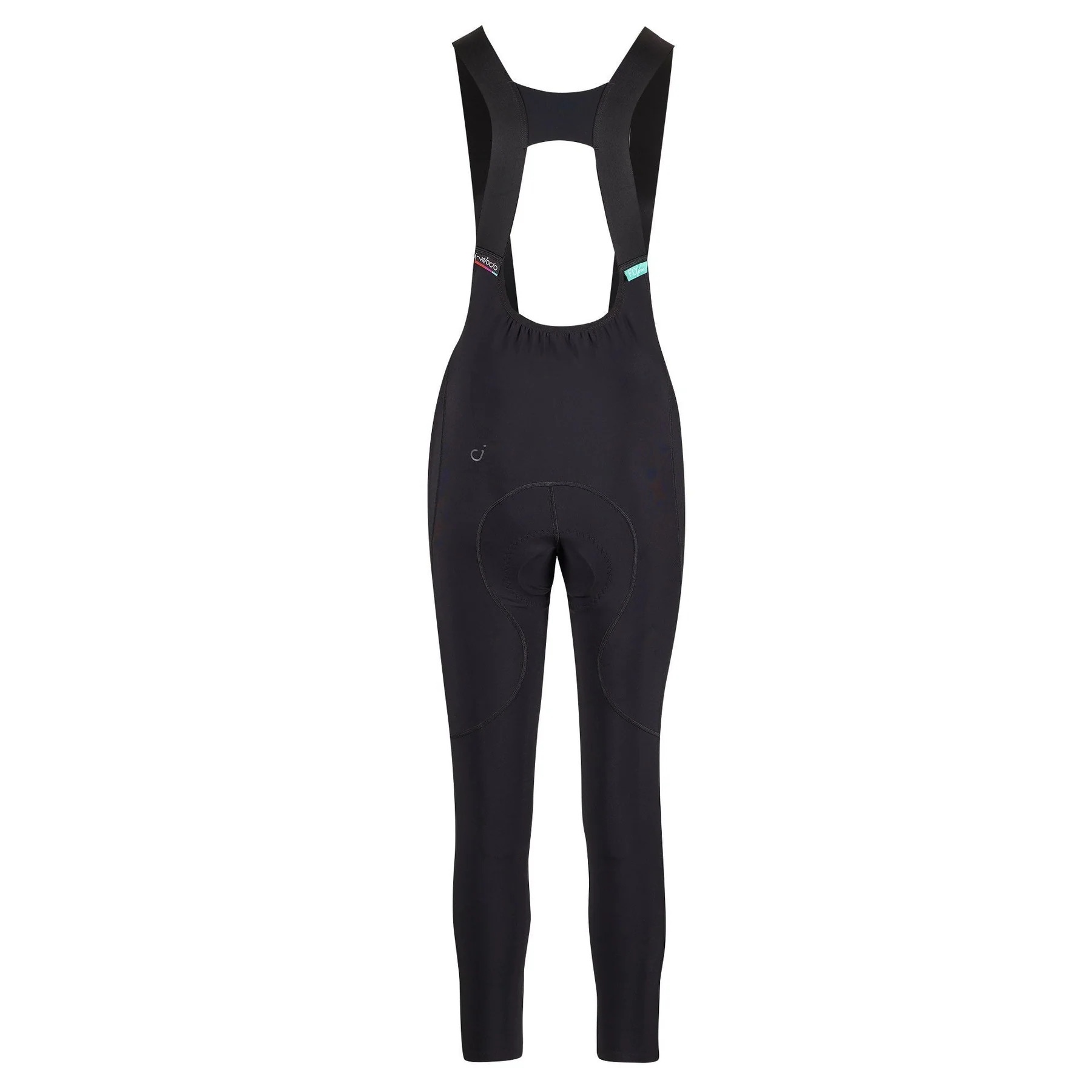
Velocio's Foundation bib tights use 100% recycled materials throughout and feature both an effective bio-break system and a quality pad. A wide range of sizes is another plus.
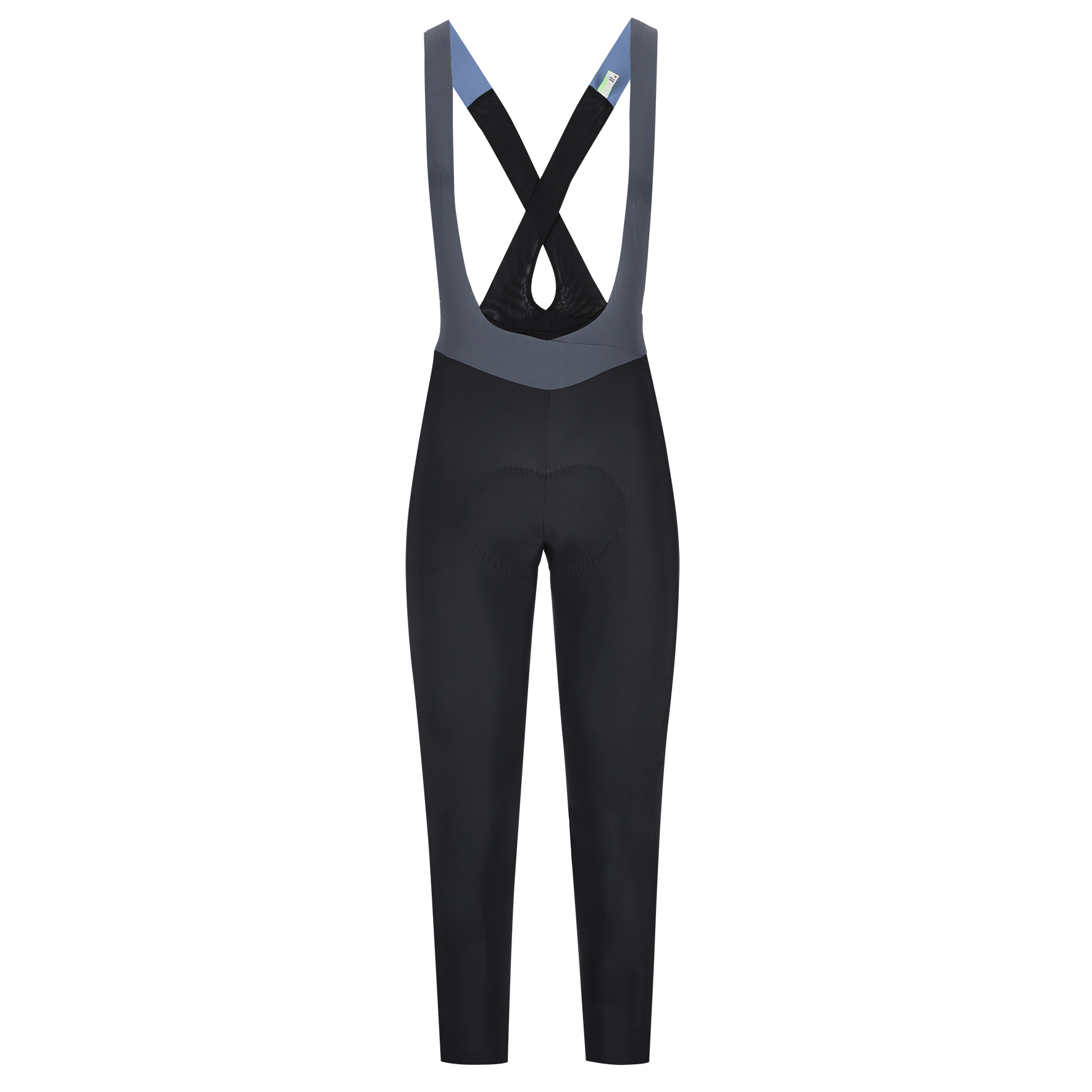
There is a lot to like about the Gregarius Hybrid Light bib tights from Italian brand Q36.5. Body temperature regulation, a great fit and excellent comfort mean you can drop the leg warmers for good.
Load two more women's bibs tights

Featuring a well-designed drop tail for quick and easy comfort breaks, the Rapha Pro Team tights succeed where many others fail. They also deliver bags of warmth and reflectivity, too.
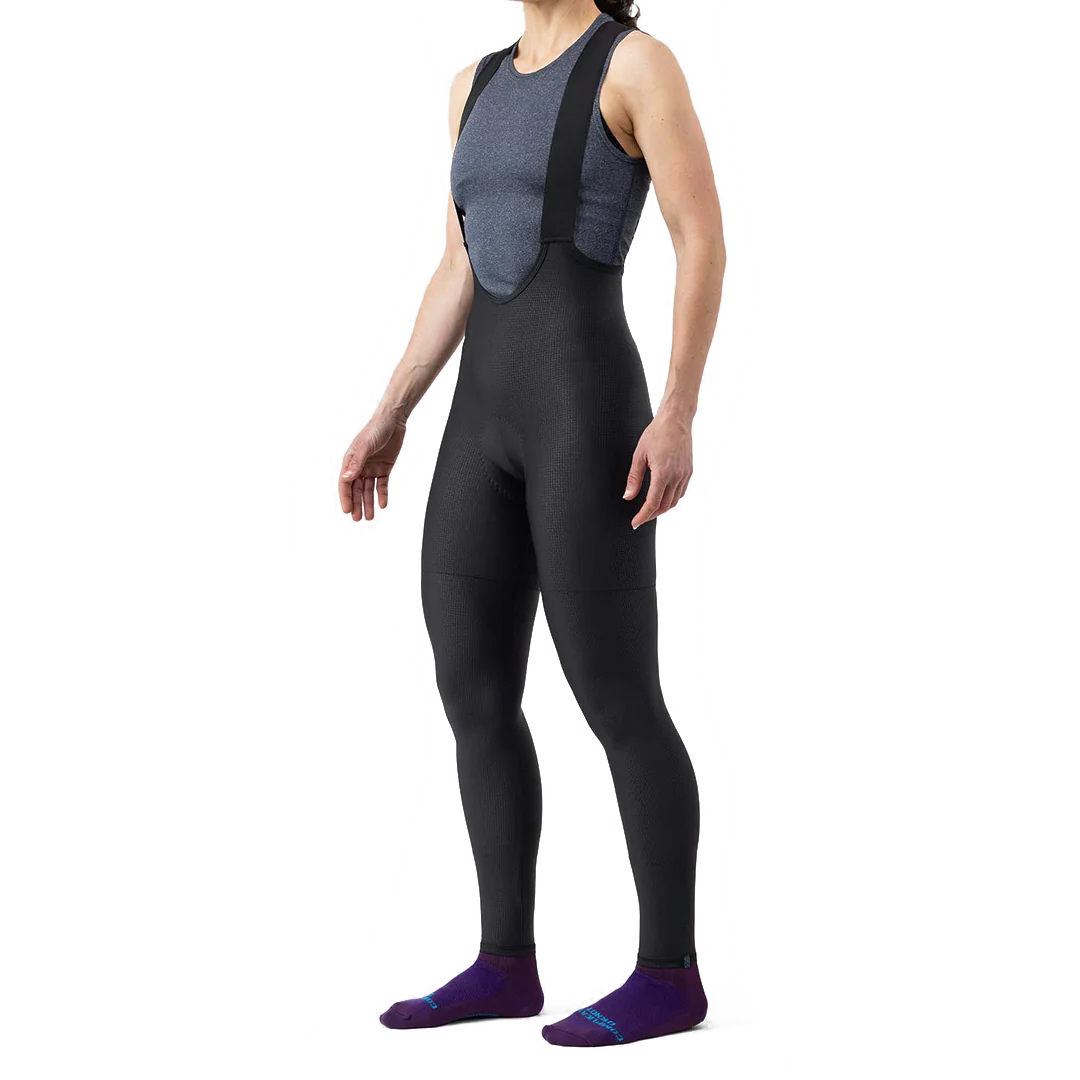
The Lightweight Droptail Tights from Ornot are an absolute game-changer. Their no frills comfortable design offers a full-length leg warmer replacement for morning summer commutes or longer endurance rides in shoulder seasons.
The best winter bib tights reviewed
Best men's bib tights overall

Velocio Thermal Utility Bib Tight
1. Velocio Thermal Utility Bib Tight
Our expert review:
Specifications
Reasons to buy
Reasons to avoid
Velocio’s Thermal Utility Bib Tights really didn’t put a foot wrong and quickly became my favourite pair. Before jumping into the details, I’ll just highlight my general preference for natural fibers - and wool, in particular. In base layers and socks, I find it so much more effective at keeping me warm and comfortable. Even in the summer, for long rides, I do much prefer the feel of a merino jersey to synthetic fabrics.
So, from the outset, I was expecting to prefer the ‘Power Wool’ fabric employed by Santini, rather than the Nylon, Polyester, Elastane blend of Velocio’s Thermal Utility tights. But, to my surprise, I did actually prefer the feel of Velocio’s Thermal Utility Bib Tights. They were just so soft, warm, and presented a more effective barrier against the elements - whilst also still being competitively light and free moving (unlike Rapha’s and Endura’s heavier-feeling products).
Just to clarify, the difference between Santini’s Adapt tights and Velocio’s Thermal Utility bib tights isn’t large. But, as you can only wear one set of tights at a time, it is clear when you do have a preference!
The Thermal Utility bib tights do run a little hot - I wasn’t comfortable wearing them above nine degrees. But they do a truly excellent job in persistent light rain, which we get an awful lot of in Wales, with the hills catching the moisture as it comes in off the sea.
Veolcio’s Signature chamois strikes a great balance between comfort and cushioning without being overly bulky. Plus the tights in general had a particularly good second-skin fit, not being restrictive, but also not sagging or feeling loose at all either.
The cargo pockets themselves were very nicely integrated. They didn’t have an overturned flap of fabric like some mesh cargo bib shorts have - which provides extra security for keeping your kit in place, but I didn’t have any issues with my phone, tools or energy bars falling out. Then again, It wasn’t very often I was riding with that kit stored in those pockets. The main benefit for me was, when stopped and faffing around, I had two additional easy-access locations to stuff my kit - which was much appreciated.
I would say that the large reflective panels, although great for visibility, do feel a bit crinkly in your hands when pulling the tights on - but they’re imperceptible when riding, so I won’t knock a point off for that.
Best for wet weather
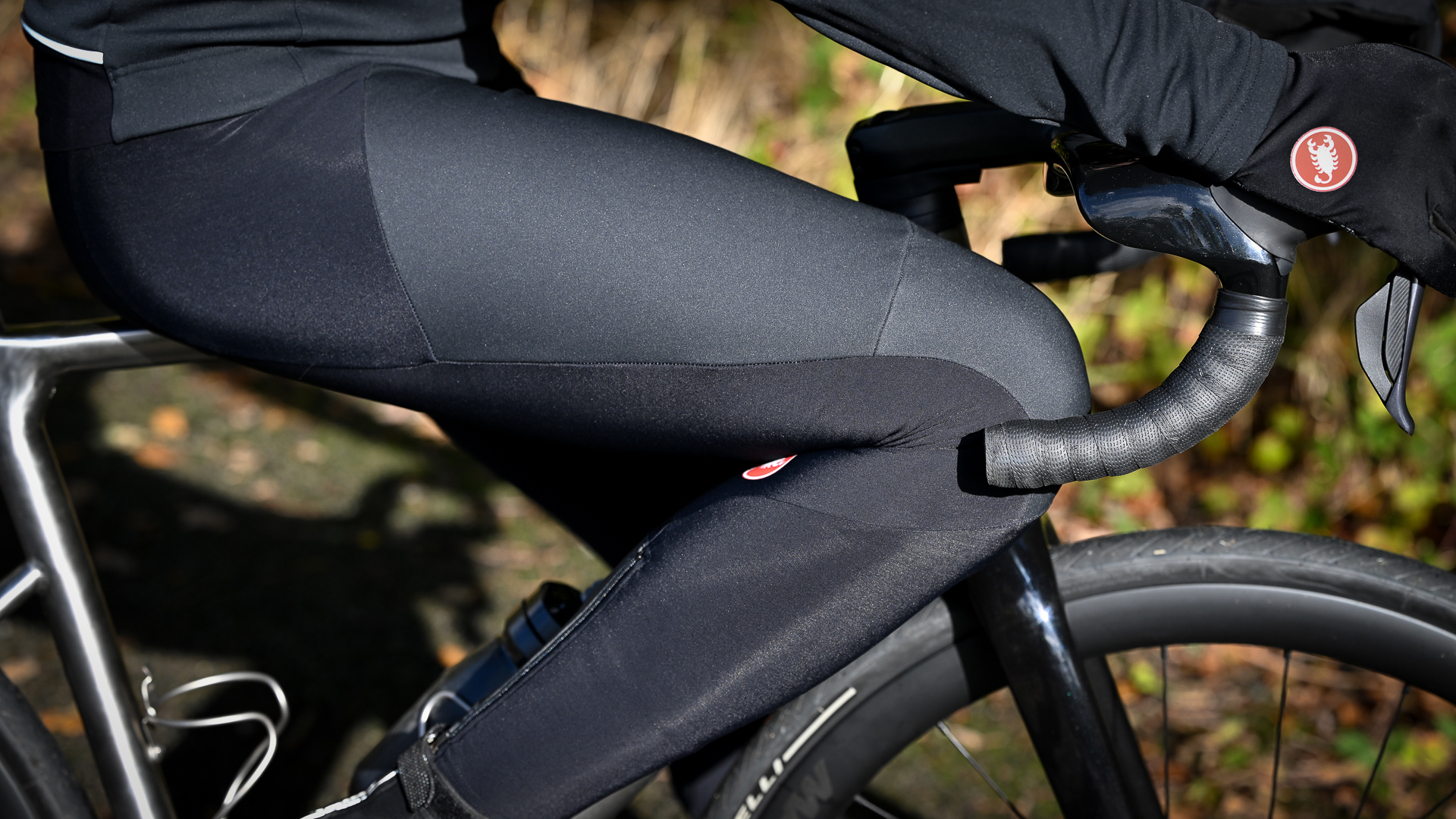
Specifications
Reasons to buy
Reasons to avoid
Another top-range garment, which this time not only claims to be the most expensive in the brand's lineup but also offers top performance in winter conditions. According to Castelli, these bibs are designed for those dedicated enough to ride in rain or snow, which slightly differs from their claimed RoS - Rain or Shine, because when it does shine, they do get quite warm.
Just like the Gorewear Distance, the Sorpasso RoS manages the bulk of winter bibs by using multiple fabrics in a strategic manner to keep what needs to stay warm, warm, and what needs to breathe, free to do so. Castelli takes it a step further with the Gore-Tex Infinium Windstopper membrane and their own Nano Flex 3G, which adds extra premium to the cost but also provides additional all-weather protection beyond warmth. This is all topped off with Castelli’s range-topping Progetto X2 Air Seamless chamois, which I am a big fan of and can suit a reasonably wide range of riders.
Out on the road, the Sorpassos do an incredible job of keeping you warm, and they feel a little like donning a suit of armour, as you ‘batten down the hatches’ with a sense that you no longer need to bother checking the weather forecast. However, they have a few little quirks that cost them that half a star. The first of these is the slightly strange sizing. At 186cm/6ft 1”, I almost always select a large from Castelli; however, the lack of flexibility in the Infinium windstopper panel had me sizing up to an ego-crushing XL. Even then, the leg is very short, which, for those who choose long overshoes, is not an issue, but for me, it left a gap between the leg and my best winter boots, allowing cold air and water to enter.
There is also an odd selection of fabric around the ankle and shin. Castelli has opted to use their own Nano Flex material in this area instead of Gore-Tex, which I assume is because the lack of stretch in the Infinium material wouldn’t provide a good fit. However, I can't help but think that this area takes the most spray and the brunt of winter riding. As good as Nano Flex is, it’s not very waterproof, if at all. This means that eventually, the fabric becomes saturated, and you start to feel a chill.
Overall, these are the warmest bib tights I have ever used, and they definitely manage temperature well, not just retaining heat to avoid the inevitable wet feeling from the inside out. They are an investment, for sure, but the protection they offer is better than that of the competition.
Read our full Castelli Sorpasso RoS Wind Bib Tight review
Best for comfort
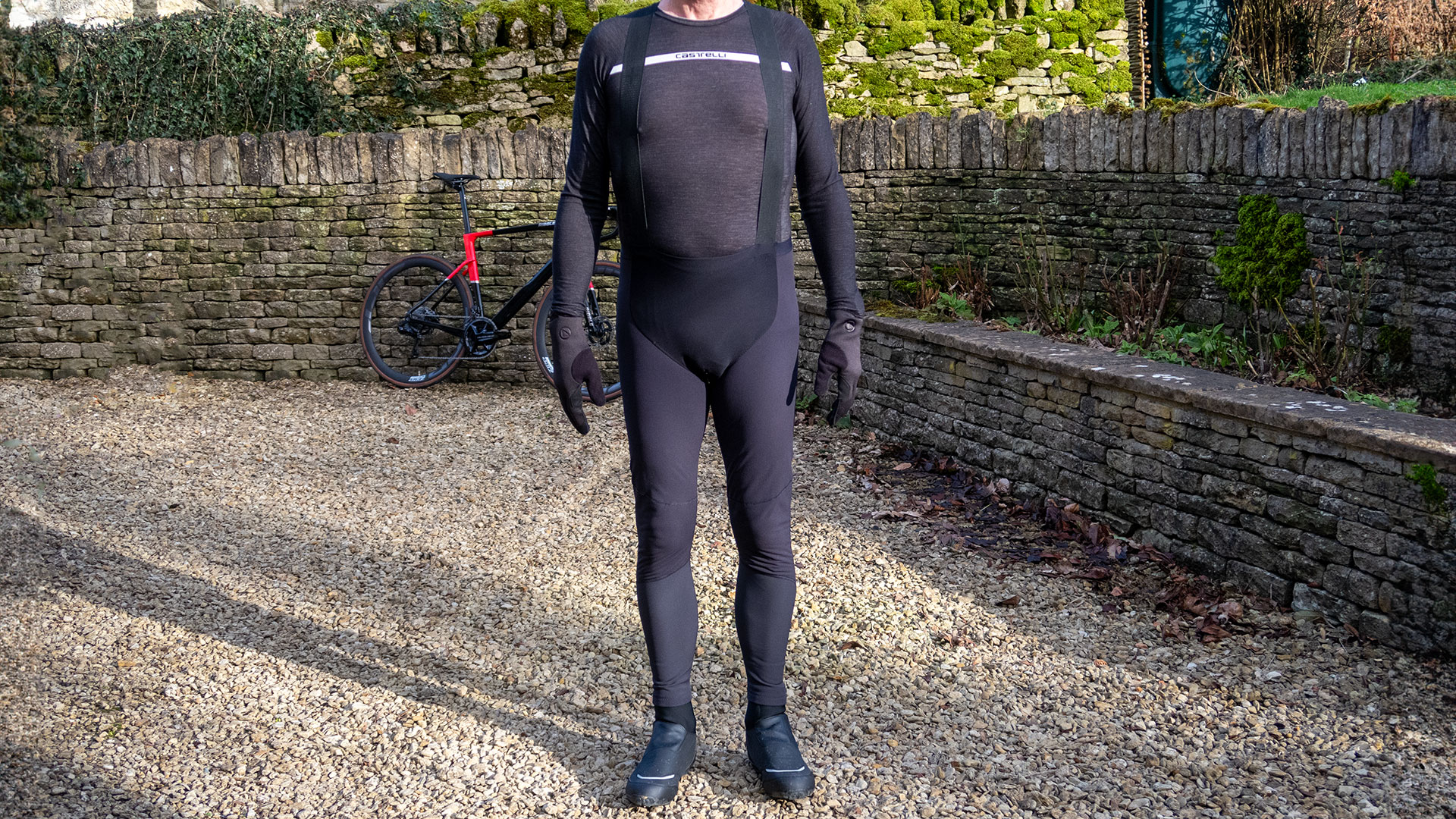
Specifications
Reasons to buy
Reasons to avoid
Representing the brands ‘warmest offering, the Distance Winter Bib Tight from Gorewear is marketed as the bib for those ‘Epic and Coldest of winter days’. Inspiring stuff, however, warmth on this scale tends to come with bulk, and bulk with long tights inevitably means bunching or restriction in movement. So, have Gorewear cracked it?
In short, yes, Gore has done a very good job with the Distance bibs. The first thing you notice is the complex construction of the bibs, with different fabrics all over the garment, specifically designed to perform differently for each area of your body. This is most noticeable when you first step out into the cold and you have warm knees but a slight breeze through the crutch, which was a somewhat unwelcome surprise. However, after just a couple of minutes, your body warms you and the fabric, and the temperature regulation—given that almost all my testing was done between 3°C (37°F) and 7°C (44.6°F)—was excellent.
So, how has Gore reduced the bulk but made it perform this well? I believe this is a combination of the construction, as I mentioned, with multiple high-performing fabrics and decent articulation. Also, many of the garment fabrics feature significant amounts of Elastine content, as much as 16% in some areas. So, while the fabrics do feel reasonably bulky in your hand, just like many other winter bibs, there is a lot of stretch.
Gore has done an admirable job with the Distance bibs; they can be relied on in winter, and the great fit, articulation, and smart panel placement are excellent, especially considering they are considerably cheaper than other premium offerings.
Read our full Gorewear Distance Winter Bib Tights review
Best bib tights for shoulder season
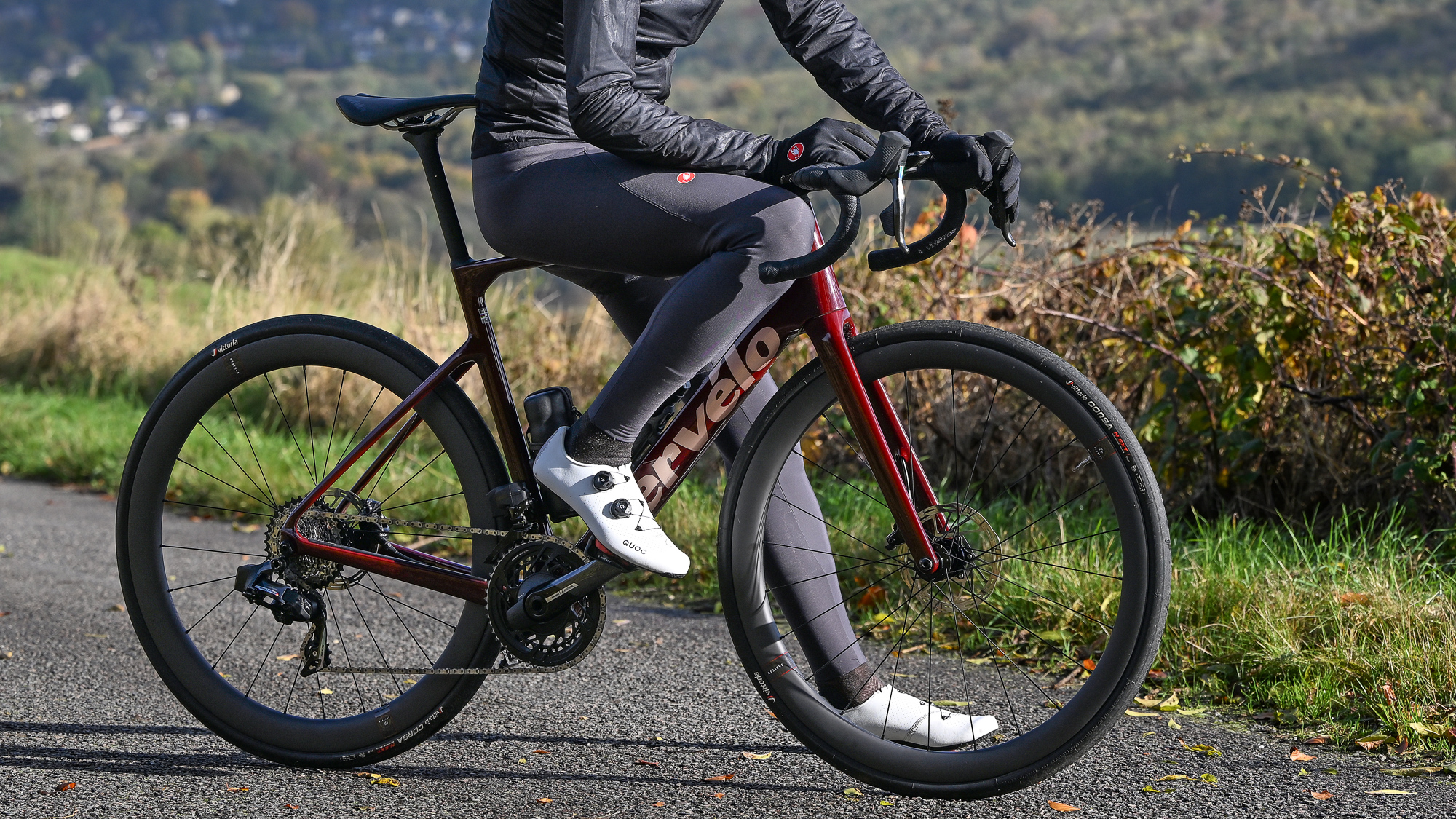
Castelli Espresso Bibtight
Castelli Espresso Bibtight
Our expert review:
Specifications
Reasons to buy
Reasons to avoid
Castelli clearly expects the Espresso Bib Tight to be a popular purchase as they are available in seven different colours. I suspect that they might be correct, as our tester loved the freedom of movement that they offered, coupled with their top-drawer seat pad.
They don't offer as much weather protection or warmth as some tights on test, and nor are they meant to - Castelli has plenty of other options if you are riding in truly frigid temperatures. What they do provide is a bit more warmth than a shorts/leg warmer combo with arguably less restriction, and they are certainly easier to pedal in than some of the more extreme bib tights.
The Thermoflex fabric is warm enough for single-digit temperatures, particularly if it's cool but dry, and the seat pad is the same as that used by Castelli in their most expensive shorts, so you aren't getting short-changed in terms of comfort.
Read our full Castelli Espresso Bib Tight review
Best value men's bib tights

Rapha Core Cargo Winter Tights
5. Rapha Core Cargo Winter Tights
Our expert review:
Specifications
Reasons to buy
Reasons to avoid
Rapha’s Core Cargo Winter Tights are one of the more affordable models on test and, as such, there are quite a few points of difference which can be pulled out in contrast to the bib tights at the more premium end of the price scale.
It is useful to be aware of what you are getting/missing out on, but it’s also worth keeping things in perspective - lazer cut cargo pockets do look neater, but they are very much of the ‘nice to have’ ilk, rather than an actual necessity. Overall, I think these tights are great and well suited to riding through winter. If your budget doesn’t stretch to the higher end tights on test, it’s not that you wouldn’t be able to ride in certain conditions, just that it could be more comfortable.
Keeping that balance and those trade offs in mind, let’s jump into the details. First is the fabric. Whereas some of the tights on test boast all sorts of weather-proofing properties, the fleece-backed fabric which Rapha employs is comparatively less technical. But thanks to the thickness of the Core Cargo bib tights, it actually does a pretty good job at blocking out the wind - and it takes a while for persistent mizzle or road spray to work its way through the fabric.
However, once the tights do get wet, they do hang on to the water for longer than the lighter and thinner models, such as the Castelli Free Aero RC and even the Santini Adapt. It’s not a show stopper, but it is less comfortable than those higher end models - which is what you would expect. On the flip side, with the thickness of the fleece, the Core Cargo Winter tights are warmer than both of those two high performance models.
In the cold snap we had through early January, I wasn’t exactly toasty on my early morning rides into Cardiff - but then the temperature was two degrees below zero and the gentle downward slope following the river really doesn’t require much in the way of pressure on the pedals. Of course, there are deep-winter-specific bib tights - like Santini’s Vega Dry - which would keep you in greater comfort down to even lower temperatures, but those are even more expensive still.
The pad is Rapha’s Classic chamois, which I think strikes a good balance. Although it’s less dense than Rapha’s Pro Team chamois and less cushioned than the ultra-distance-specific Brevet chamois pad, both of those are likely to be surplus to requirements for winter training. Sure, base miles are long - but generally not 12 hours long!
If you do need that kind of performance, there are other tights you can choose from - but if you don’t, it’s good that you can save some money on this aspect of your kit. The Classic pad is still great for more ‘everyday’ riding through the winter and I was happy with it.
I think that the cargo pocket is a great addition to these tights. You can have your hands full at cafe stops at the best of times, let alone when the gloves and lights of winter riding are thrown in for good measure. It is a really useful feature - and definitely not one that should be just confined to gravel and bikepacking.
To be fair, I think for the negligible difference in weight and breathability, cargo pockets make sense for the overwhelming majority of rides - but I’ll save a deeper dive into that topic for another day!
The ankle cuffs are tight fitting whilst still being stretchy enough to get your feet through, which is my preferred approach. Other people prefer zips: less strain is put on the fabric when stuffing your feet through - and it’s a little easier to boot. But I find that zips are generally the first thing to break, plus it can be uncomfortable around your ankle when worn with over shoes (assuming you wear your overshoes over bib tights, but that’s another topic for another day!)
In all, Rapha’s Cargo Core bib tights are a solid performer for a less exorbitant price.
Best men's bib tights for warmth
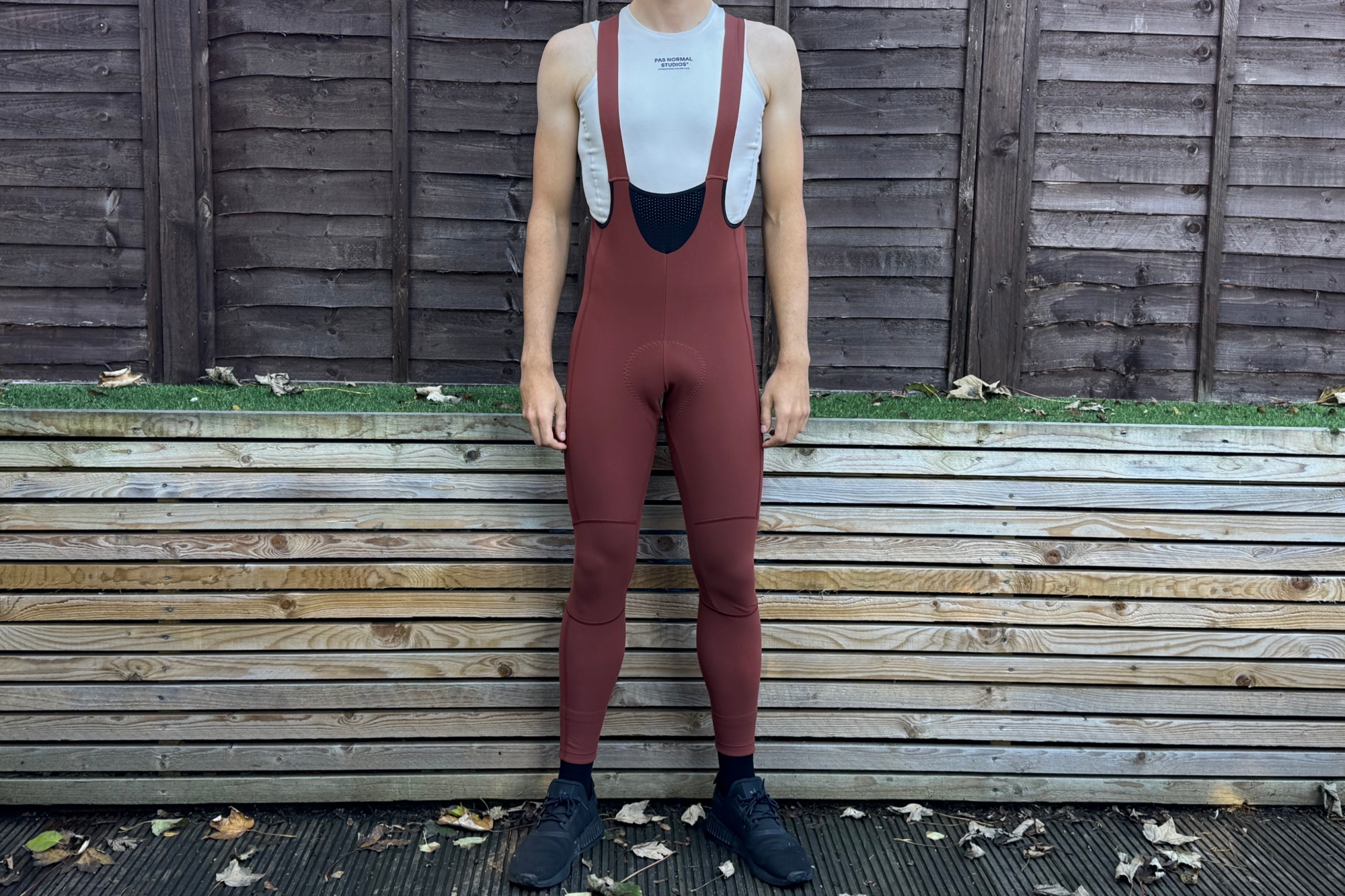
Pas Normal Studios Mechanism Deep Winter Bib Longs
Specifications
Reasons to buy
Reasons to avoid
The Pas Normal Studios Deep Winter tights are an impressive pair of bib tights for properly cold winter weather. The Wintex Pro membrane does a great job at keeping wind chill to a minimum, while the grid fleece inner is soft and brilliantly insulating even in sub-zero temperatures. The high front also boosts insulation, especially around the trunk, but it does make nature breaks difficult.
The DWR treatment on the outside is very effective at beading water, but the lack of taped seams means water does ingress. The fit is race-oriented, with the straps a bit shorter at the front to pull you into a cycling position. On the bike, this works well and is comfortable, but when more upright, the straps can pull.
The articulated legs make quite an impact, reducing fabric bunching around the legs, while the chamois is brilliantly comfy once you get the tights in the right position. The price is high, but these are potentially the best-insulated pair of tights I’ve used in freezing conditions.
Read our full Pas Normal Studios Mechanism Deep Winter Bib Tight review
The best women's bib tights reviewed
Best women's bib tights overall
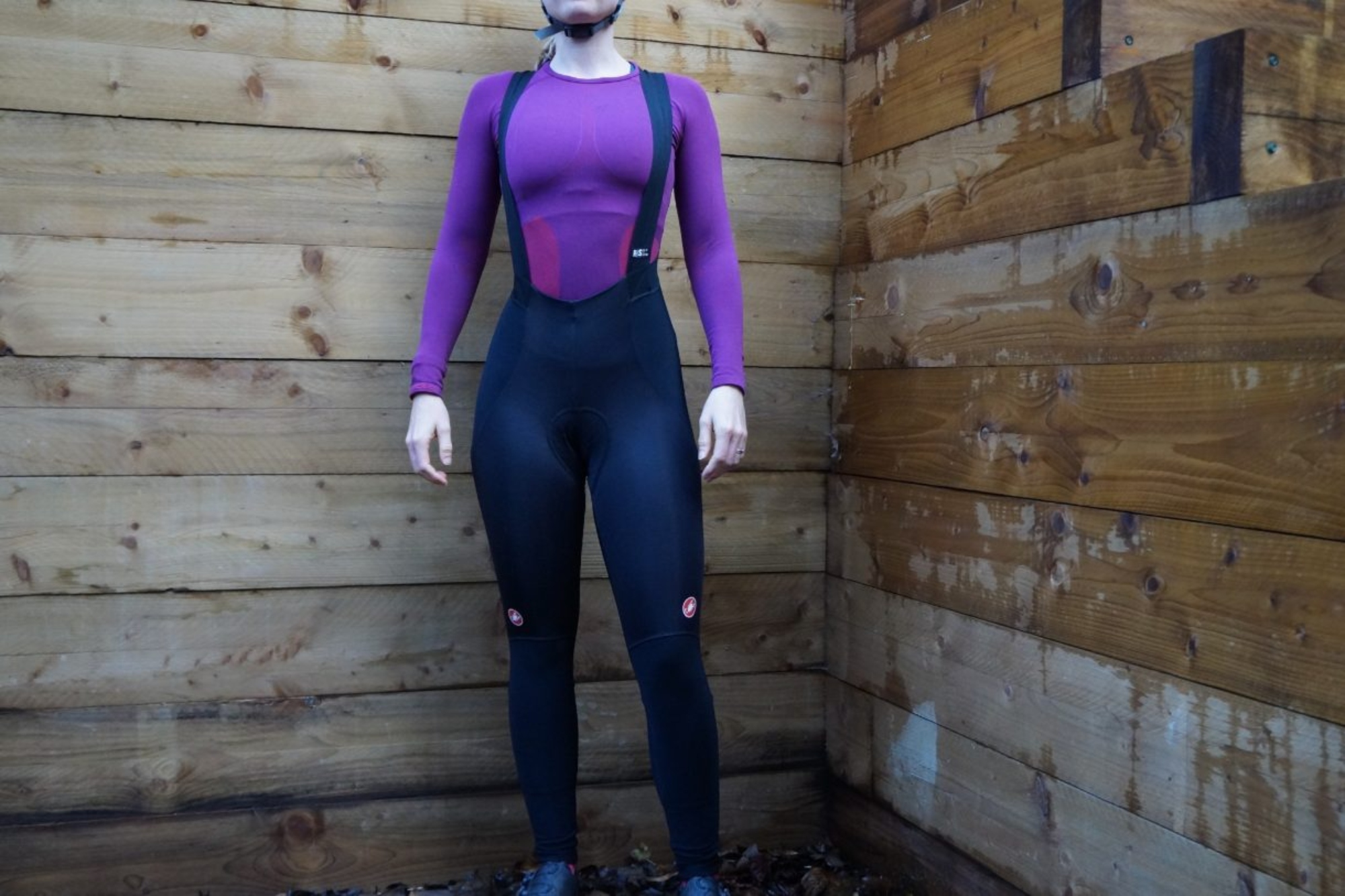
Castelli Sorpasso RoS women's bib tights
Specifications
Reasons to buy
Reasons to avoid
On test we found the Castelli Sorpasso RoS women's bibtight to be extremely comfortable, ticking all the right boxes: warmth, water resistance, breathability and fit, gaining them a coveted Cycling Weekly Editor's Choice Award.
Worn on both dry and mild winter rides, as well as dank and cold ones, they've proved themselves capable at both thanks to both the wind and water resistance and high breathability. As with all of the best bib tights, the Castelli Sorpasso RoS pair manage to do all the above without restriction around the knees or thighs.
The pad provides ample comfort for many hours in the saddle, but it's a shame that some form of quick access comfort break feature wasn't designed in. The only other not-perfect aspect is that ankle zips don't really serve much purpose, but for some, it might make getting the tights on and off a little easier.
All in all, however, these are a superb pair of women's specific bib tights that will get a lot of wear, and seem a positive bargain when compared to the Rapha Women's Pro Team Winter bib tights.
Read more: Castelli Sorpasso RoS women's bib tights full review
Best value bib tights for women
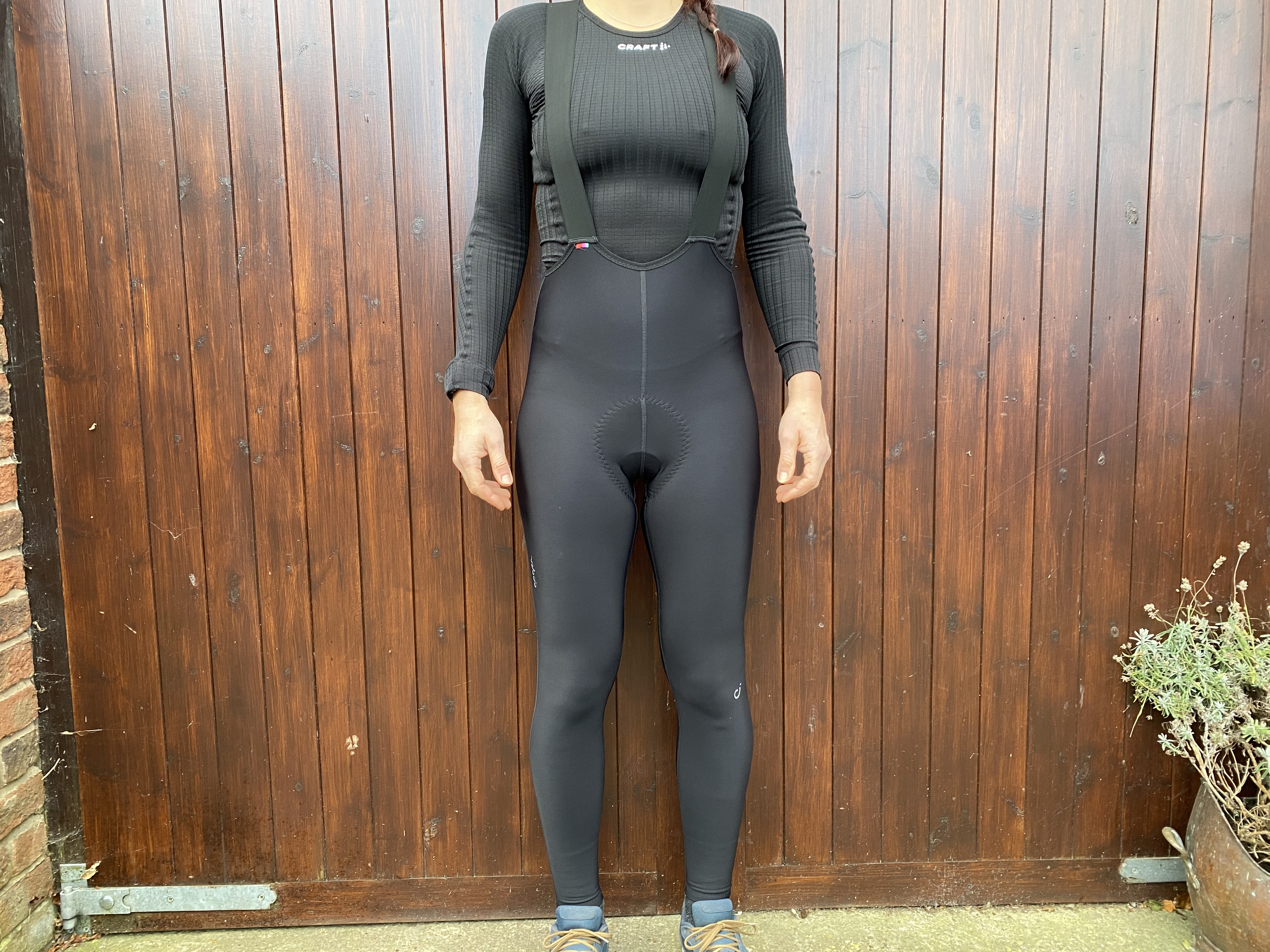
Velocio Women's Foundation Bib Tights
Specifications
Reasons to buy
Reasons to avoid
On test the Foundation Bib Tights proved to be a top-quality pair of bib tights, benefiting from a genuinely manageable, irritation-free, bio-break system. The chamois didn't prove to be the most breathable on longer rides, but proved comfortable enough for mid-length adventures.
Velocio's Foundation tights also scored highly due to the use of 100% recycled fabrics and for their full range of sizes that really do cater for everyone.
Read more: Velocio Women's Foundation Bib Tights full review
Best women's shoulder season bibs

Specifications
Reasons to buy
Reasons to avoid
Leg warmers have had their day in cycling, and I, for one, am glad to see their popularity fade. It's not a piece of kit I was ever very fond of, and it is a kit like the Gregarius Hybrid Light bibs that are changing people's perception of winter kit. Q36.5s MO is all about maintaining core temperature, which they claim enhances performance, increases comfort, and reduces stress on the body.
With that in mind, Q36.5s preparatory fabric uses a tight weave to naturally insulate and block the wind, whilst still offering a high degree of breathability, UV protection and sun deflection. Q36.5 claims this should reduce heat build-up by up to 1.5°C compared to similar fabric constructions from its competitors. They also feature many other innovative elements that distinguish Q36.5 from its competitors, including the silver thread and X-shaped straps, which are designed to provide increased compression and lumbar support while allowing for unrestricted movement. Q36.5 seems to know and understand their limits by opting for a popular chamois from Elastic Interface.
First impressions were certainly good; there is definitely compression and support, but in no way did it feel restrictive. I instantly forgot about the straps, and although the chamois seemed a bit simpler than the usual offerings from Elastic Interface, it was still of good quality and certainly didn't cause me any issues. To really put the Gregarius tights to the test, I signed up for a very hilly off-road race, firstly to test how they handled the intensity, but also, it was pretty cold, wet, and windy, which felt like the ultimate test for the fabric. I can report they passed with flying colours, knocked the cold out of the wind, and most importantly kept my knees warm.
In conclusion, the Gregarius Hybrid lights are terrific; their freedom of movement and design make them a seriously comfortable bib tight. They have a limit on how low the temperatures can go while wearing them, but given their performance during more intense efforts, they may well be the ideal long cross-bib for those who don’t understand why others wear shorts in January.
Read our full Q36.5 Gregarius Hybrid Light Bib Tights review
Best bib tights for comfort breaks
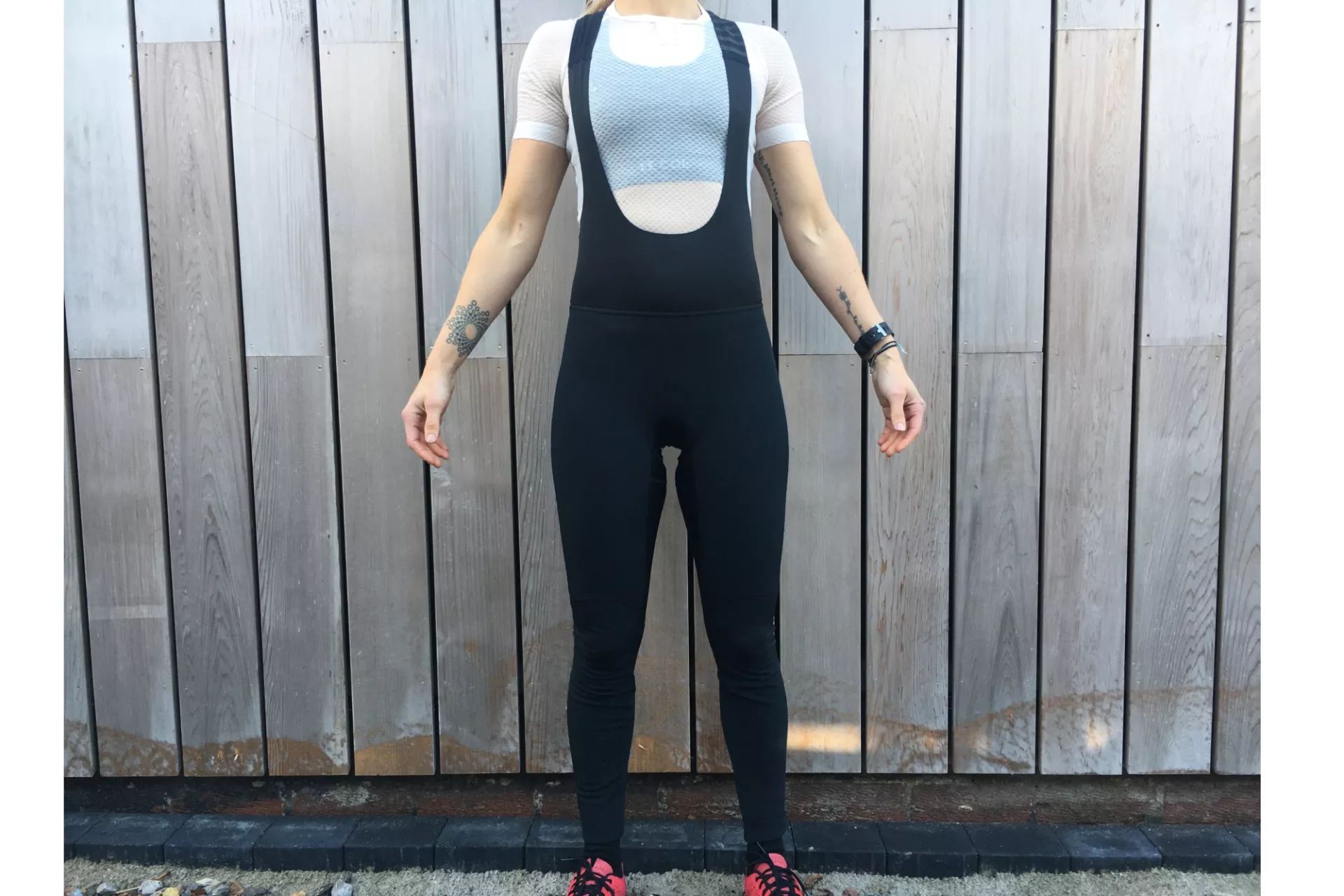
Rapha Women's Pro Team Winter bib tights
Specifications
Reasons to buy
Reasons to avoid
Wind proof and water resistant with an, almost, handy, dropped tail for comfort breaks - the Rapha Women's Pro Team Winter bib tights are a go-to winter riding companion.
Strategically positioning of water and wind resistant fabrics provides protection where it's needed, while more breathable, but super cosy Thermoroubaix fabric helps prevent sweat build up. It’s worth noting that they perform best below 10º for optimal temperature regulating comfort.
The dropped tail clasp is a little tricky to master, especially if it pings up your back, under your top layers and you've reach peak winter ride immobility, consider it a team mate bonding exercise.
We really like the fact that the subtle but highly reflective details are visible from the sides, and it seals the deal on these being one of the most practical pair of bib tights out there, making us over look the too loose ankle fit.
However, while they are the bee's knees in terms of performance and overall fit, their price tag lets you know it!
Read more: Rapha Women's Pro Team Winter bib tights full review
Best alternative to leg warmers
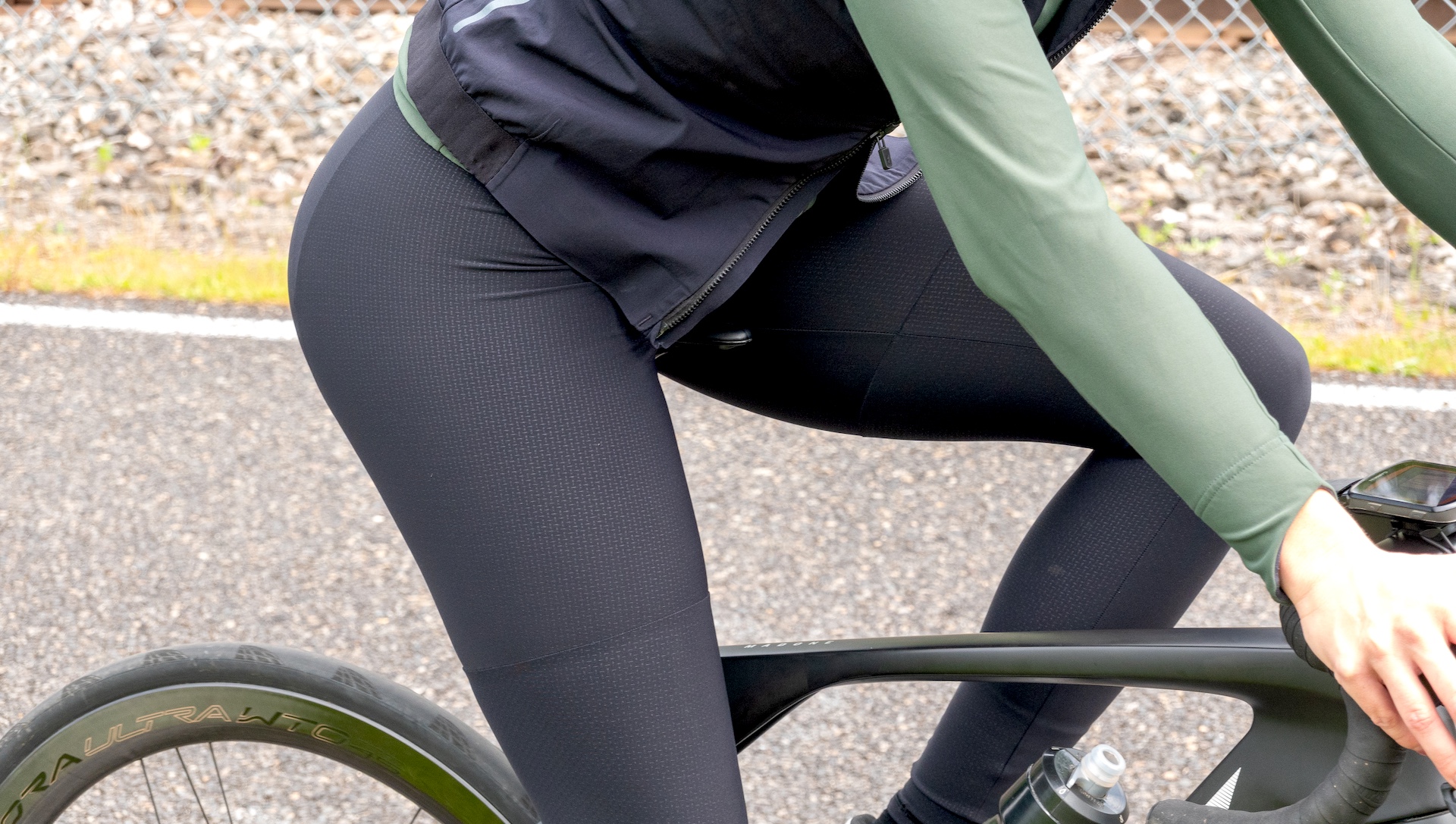
Specifications
Reasons to buy
Reasons to avoid
Just like Hannah, I also despise leg warmers, the sausage legs, and the constant falling down, especially as the intensity increases. Just like the Q36.5 bibs, Ornot aims to end the dominance of leg and knee warmers by putting them in the past, as one of those items people will look back on and say, ‘wasn’t funny we wore them for so long?’ with their take on lightweight bibs, the Droptail tights. And…. they are a game changer.
These full-length tights are made of 78% recycled polyamide and 22% elastane, which carry an Oeko-Tex certification, meaning they have been tested and certified to be free from harmful substances or lack thereof. Ornot also includes UPF 50+ sun protection, a chamois made from recycled materials designed for endurance riding, and a "life-changing" system for comfort breaks.
Staying true to its name, the fabric is very thin and lightweight, with just the right amount of stretch, providing a good form fit. However, I found myself between two sizes, so the compression was low, and in hindsight, I might have gone down a size for an even better fit. Nonetheless, it’s Ornot’s droptail system that really stands out for me. No clips, magnets, or jersey removal—simply pull down the back of the bibs when squatting, and you're good to go, as easy as a pair of pants.
For me, the Droptails' ideal working range is similar to the temperatures you'd reach for knee or leg warmers. This is actually ideal as it provides a much better alternative. Before writing this, I hadn’t spent much time in weather warmer or colder than 6°c/43°f and 14°c/58°f, but for fairly no-frills bib tights, these are a worthy investment that won't disappoint.
Read our full Ornot Women's Lightweight Droptail Tight review
Advice
How do winter bib tights protect you from wind and rain?
Bib tights often use a soft and warm fleece-lined Roubaix fabric to provide insulation. However, some also incorporate windproof panels, and others go further and sew in water-resistant or waterproof elements. The more protection you get from adverse conditions, generally, the more bulky the tights will be; but sometimes a little freedom of movement is worth sacrificing. The very best bib tights will be able to provide waterproof elements with a supple fabric.
If you have opted for a pair of water resistant bib tights, it's highly likely that this is provided from the fabric gaining a DWR (Durable Water Resistant) coating. After time and washes, this will need to be re-treated. It's a really task and there are lots of spray on the market to choose from. Our guides on the best waterproof treatments and how to re-waterproof your cycling jacket are both applicable to re-treating bib tights too.
How do the best winter bib tights move sweat away from your skin?
Balancing keeping warm vs breathability can be tricky when it comes to winter kit. Although it can be cold outside, you can soon warm up on and bike and if your bib tights aren't breathable, you're quickly going to work up a sweat that will make you very damp on the inside.
The best bib tights will use strategically placed panels of different fabric to take account of where you need rain and spray protection, windproofing, and where to provide exhaust ports. In general, the front of the legs get the most weather protection, while the back is more breathable, as is the upper body where mesh is often used to help heat escape.
What is a chamois pad?
At the heart of any pair of bib tights is the chamois. This needs to provide comfort when spending hours in the saddle. In years past, brands often provided tights without a pad, to be worn over your favourite cycling shorts. These days, they can all sew in pad into tights in a way that's comfy and the reduced seam count is preferable. You'll find bib tights offering different levels of chamois pad thickness, some with pads with sections of varying cushioning at different contact points and chamois with anti-bacterial properties.

Castelli chamois
Should I buy bib tights or waist tights?
We've reviewed bib tights above - these have upper body portions which means they can't fall down, they don't cut in at the stomach and the chamois stays put. It is possible to get waist tights, but we'd always recommend bibs.
We've got a lot more on the subject on our dedicated waist shorts vs bib shorts: which are better and why page.
How we test
As well as our more general testing protocols, all of these bib tights have been rated based on a few very important factors.
As they will generally be worn on cooler conditions it is was important to consider the level of weather protection that each provided - some are little more than spring/autumn weight, similar to wearing bib shorts and legwarmers whilst at the other end of the spectrum there are bib tights with fleece linings and windproof panels intended for much colder conditions.
Fit and freedom of movement is also very important; it's no good a pair of tights being very warm and weatherproof if they don't allow you to pedal easily and restrict your movement. These bib tights all have an integrated seat pad, so the comfort of the pad has also been taken into consideration, although this can be a highly subjective matter.
The latest race content, interviews, features, reviews and expert buying guides, direct to your inbox!
Hannah is Cycling Weekly’s longest-serving tech writer, having started with the magazine back in 2011. She has covered all things technical for both print and digital over multiple seasons representing CW at spring Classics, and Grand Tours and all races in between.
Hannah was a successful road and track racer herself, competing in UCI races all over Europe as well as in China, Pakistan and New Zealand.
For fun, she's ridden LEJOG unaided, a lap of Majorca in a day, won a 24-hour mountain bike race and tackled famous mountain passes in the French Alps, Pyrenees, Dolomites and Himalayas.
She lives just outside the Peak District National Park near Manchester UK with her partner, daughter and a small but beautifully formed bike collection.
- Matt Ischt-BarnardEcomm and Tech Writer
